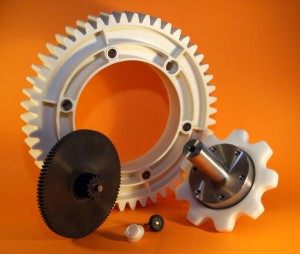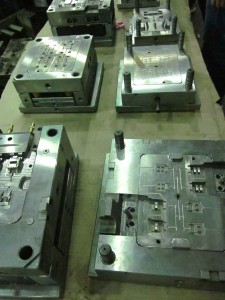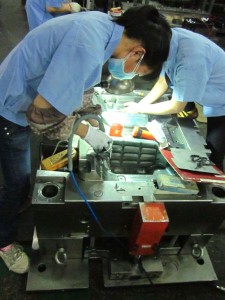 When the Chinese practicality and efficiency meet the intelligence and the style of the made in Italy.
When the Chinese practicality and efficiency meet the intelligence and the style of the made in Italy.
The Chinese market is unexplored and rich in contradictions under several respects, at least in the opinion of those who still believe in commonplaces. False legends to be discredited or a reality made of exploitation, scarce quality and necessary just to obtain lower prices? Some players in the sectors of the mould and die production, moulding and forming, “shout” it should be better not to generalize but instead to assess the Chinese market more in-depth and to collaborate with this reality in favour of a mutual enrichment of competences and efficiency. History reminds us that we must not fear China but we should instead consider it a great opportunity to be seized at once.
As it happened for Italy in the post-war period, also China is changing and suiting western standards and, even if differences remain, over the years they have increasingly diminished.
Like for all transformations, it is a process that cannot be accomplished overnight, it is a course that must be faced gradually, to allow the understanding, the acceptance and assimilation of changes and, inside it, Italy can play an essential role to transfer know-how, an opportunity to become a great partner for China and to win in the globalization game.
Concerning the Chinese market, the annual data published in the ISTMA Statistical Year Book confirm a growing trend, with an apparent global average growth in 2012 by 44.4%. Besides, also the first estimates of 2013 confirmed this trend.
In the specific case, since 2002 the Chinese TDM (tools, dies and moulds) production has grown by 17.48% on annual average basis, scoring a further rise on yearly average basis by 14.54% since 2009, positioning China at the first place in the production of plastic and rubber moulds and granting the primacy to this Country also for the die production and for pressing in the short term.
According to Assocomaplast, Italian plastics and rubber processing machinery and moulds manufacturers’ association, the trend of Chinese imports is even more interesting, showing a progressive decrease since 2010 until now. In 2013, the final balance datum is negative (-5.8%), witnessing perhaps a higher capability of Chinese manufacturers of satisfying processing companies’ domestic demand.
In Italy, despite a quite fluctuating trend during the year, 2013 exports ended substantially in line with 2012. The good performance of sales abroad permitted Italian manufacturers to compensate the persisting weakness of the home market. It is worth underlining that export statistically represents over 65% of the overall turnover, diminished by 2.5% compared to 2012 owing to the stagnation of the Italian demand.
While Italy ranks fourth among the 10 main world manufacturers/exporters of machines, equipment and moulds for plastic and rubber materials (after respectively Japan, Germany and China, at the first place), China conquers the primacy of the 10 main world purchasing Countries of machines, equipment and moulds for plastic materials and rubber.
Therefore, the Chine market constitutes a very appealing reference market, rich in opportunities. The Italian companies involved in this investigation agree, since they managed to seize this opportunity and to transform it into a strong point and a differentiation factor for their customers.

“We have entrusted China with the mere execution in workshop only, maintaining in Italy all competences concerning the activities of engineering, analysis, rheological simulation, design and specific documental management of the various sectors, like Automotive.”
Umberto Pezziniti, President and CEO of K-GPLV Srl.
What are, anyway, the reasons that lead Italian companies to be present in China and to collaborate with local realities and what are actually the advantages from the point of view of both mould and die makers and of their customers?
Very often, Italian realities that directly turn to China with a policy of mere cost saving get stung. Like for any foreign nation, in fact, it is necessary a deep knowledge of the reference market and of its dynamics, of the legislation, of the bureaucratic practices and, even more important, of its culture. All aspects that need dedicated and skilled personnel and that small-medium size Italian realities cannot face. But can we extricate ourselves in such a complex ambit, more and more demanding in terms of increasingly fast answers?
After working directly abroad and with a long-term experience in the management, design and production of moulds and dies, for K-GPLV Srl the solution was the creation of a service company mainly dictated by its main customers’ demand of relying on a supplier not only able to provide the mould/die but to take care of the entire global process during the business fulfilment. This results in an advantage for customers that rely on a supplier that solves all problems as if it was their in-house office. “We perfectly integrate with the specific procedures of each customer, we can communicate in dedicated and customized way, with the specific modalities and formalities, in some cases drawing up the documentation directly on our customers’ modules, to facilitate the submission of such documents directly to their final customers. This is possible because we have entrusted China with the mere execution in workshop only, maintaining in Italy all competences concerning the activities of engineering, analysis, rheological simulation, design and specific documental management of the various sectors, like Automotive. We have therefore gained, actually warding it, the most precious thing: knowledge” explains Umberto Pezziniti, President and CEO of K-GPLV Srl. “Another advantage consists in the construction of a network of partners able to perform multiple moulds and dies projects, producing and managing simultaneously and rapidly over 40 moulds/dies, granting also the testing of the possible assembly of the various components and the tolerance certification, by groups of moulds/dies. For our customers, this results on one hand in an effective saving of equipment and internal costs and on the other hand in a higher value offered by a partner that has a long and deep experience able to assure the expected result in terms of time, costs and quality, even in presence of demanding challenges with extreme tolerances or complex techno-polymers to be managed”.

“…we had immediately noticed a great limit: customers were reluctant to interface themselves with a foreign, and especially Chinese, juridical subject. “We decided then to setup an Italian company so that Italian and European customers could rely on a fully Italian reference partner, then operating in compliance with the Italian law as well as Italian decrees, administrative and fiscal regulations.”
Eugenio Manni, Sales Manager at Lario Industry
If the reference partner is Italian, it is better
A quite similar experience lived also Lario Industry Srl that about fifty years ago started entering China directly with the lost wax micro-casting foundry, with the aim of selling then directly on the Italian market. However, they had immediately noticed a great limit: customers were reluctant to interface themselves with a foreign, and especially Chinese, juridical subject. “We decided then to setup an Italian company so that Italian and European customers could rely on an Italian reference partner under all respects, then operating in compliance with the Italian law as well as Italian decrees, administrative and fiscal regulations. All services on the fringes of the die production that we offer and that often are not considered in the estimate of a higher quotation than that directly supplied in China,” tells Eugenio Manni, Sales Manager at Lario Industry.
This because in a saving policy customers do not consider several elements that might hinder the import and damage in a thousand of other ways of customs, legislative and fiscal character, with a notable burden of internal costs.
The choice of China also considering the new established corporate reality that avails itself of the past experiences of people working there. Therefore benefitting from the heritage of almost 5,000 years of Chinese experience in castings of all kinds and availing itself of the Chinese professionalism, competences and specialization, the relationship has consolidated in the almost 20 years of collaboration. The decision of Lario Industry of turning to China is anyway based on a historical aspect: owing to social and ecological issues, in Italy foundries were gradually shutting down. The customers that needed to implement new projects according to a globalization vision, met big troubles with the few foundries left that had too long times of job order fulfilment.
“Therefore, the first customers that turned to us were not driven by a saving policy but by the lack of alternatives, with the risk of being surpassed by their competitors,” added Eugenio Manni.
Still according to a globalization vision, if China compelled Italian companies to evolve to remain competitive, it soon proved to be an enormous growth opportunity.
This happened to Ghepi that, in 2008, received a very clear input from its customers leading it to evaluate China as an opportunity to start a new adaptation process to customers’ growing requirements induced by the globalization of markets. An ambitious and committing challenge for a small reality like Ghepi (about 50 people) that anyway soon started working to win it. “The first step was the participation, as exhibitors, in the Euromold 2008 Exhibition in Frankfurt, where we met several enterprises that manufacture moulds and dies in best cost Countries (China, India, Thailand, etc.). Since then, we have consolidated, interrupted and started collaboration relationships with Chinese enterprises that satisfy our quality levels,” states Mariacristina Gherpelli, Managing Director of Ghepi Srl. “In these crisis years, the collaboration with our Chinese suppliers was an important driving engine of opportunities that, in normal conditions, would not have emerged. Our customers’ requirements of achieving higher economic competitiveness are completed by our needs of receiving highly performing moulds. To satisfy both requisites, we carried out some audits in several enterprises and our suppliers stand out both for the availability of skilled personnel and for the equipment of software for design, fluid-dynamic simulation and project management, with the addition of forefront machinery, often of European and Japanese origin.”
“Like for any other market, it is necessary to know the Chinese one to understand its qualities, to invest to limit its defects and especially to select high-quality suppliers, partners, members and employees and to refine this relationship in time, creating a dynamic business ‘system’ able to suit customers’ demands promptly,” specifies Umberto Pezziniti and especially, “China represents an opportunity only if you can rely on a determinate structure and organization, otherwise risks are too high, as witnessed by the negative experiences directly lived in China by customers that afterwards turned to us,” added Eugenio Manni.
For Italian customers, the questionable Chinese quality still remains a big obstacle to overcome. What are then the warranties of a correct qualitative level of a product manufactured at a distance of thousands of kilometres?
According to the surveyed witnesses, the issue resides in finding the right ingredients and in mixing them adequately; an activity embedded in the activity, consisting of partnerships, competences, efficiency and entrepreneurial skills.
Therefore, it is absurd to run up still today against attitudes of resistance towards the Made in China trademark when the real added value is just given by the intelligence, by the design and the technology implemented in Italy. Ineptitude is present everywhere and “since components are made in China, we think it is obvious that the quality control is executed in China under the supervision of suitable personnel for granting and assuring the compliance with the specific qualitative standards,” affirms Eugenio Manni adding that Lario Industry avails itself of two Italian persons, residing in China – and then speaking our same language, sharing out same culture and the same Italian taste – able to assess the total conformity with the mechanical and dimensional requisites for their typical customers that mainly ask for compliance with mechanical designs and international standards.
 Mariacristina Gherpelli believes that “the mould quality highly depends on the “quality” of the selected supplier, that is to say on elements like: skilled personnel, technical and technological know how, gained experiences, technological equipment, project management competences and so on.”
Mariacristina Gherpelli believes that “the mould quality highly depends on the “quality” of the selected supplier, that is to say on elements like: skilled personnel, technical and technological know how, gained experiences, technological equipment, project management competences and so on.”
Besides, it equally depends on the definition and management of specifications that will result in the mould design and in its successive manufacturing. In China, for instance, also the controlled definition of the used materials and of the heat treatments is very important. Ghepi directly takes care of the testing phases of moulds and of the item sampling, in order to execute the eventual setups directly on the spot.
“Fine” setup needs, to tell the truth, are not different comparing skilled Italian and Chinese suppliers, since they are sometimes precision setups linked with the presses used for moulding. In any case, Ghepi makes use of an internal workshop able to intervene in these situations.”
Another important aspect, which we can deduce from the witnesses by Lario Industry and Ghepi, is underlined also by Umberto Pezziniti of K-GPLV and it is the importance of optimal and consolidated relationships between Italy and China, where the two realities are symbiotic, as if it was a single entity. “The strict partnership with the Chinese company allows us to invest in mutual agreement in the respective companies, to realize jointly the yearly programmes of development, growth and work, to decide the organizational procedures and what machines to buy or to replace. To do that, we need excellent competence in Italy, rigorous procedures, written and shared rules to avoid all kinds of misunderstanding about single activities. Undoubtedly, the possibility of bringing our managerial ability – not all suppliers, not only Chinese ones, allow interacting with their productive process – has made the difference.” In terms of setup for K-GPLV, adjustment interventions are performed exactly as in any Italian workshop. They are fine operations, by successive approximation, for which they execute the testing and the sampling, they verify the result dimensionally and they repeat the operation until they reach the desired target, and the process does not end until the piece complies with the design.

“Concerning moulding, the production in China is convenient if we manufacture very high volumes, otherwise we risk that prices are higher than in Italy. In addition to that, we have surveyed a relevant gap among the technological equipment of mould making departments and the facilities of moulding departments where made in China presses are generally used”.”
Mariacristina Gherpelli, Managing Director of Ghepi Srl
About moulding and forming
If the choice of producing moulds and dies in China, availing oneselves of qualified and experienced suppliers and intermediaries, involves a series of advantages in terms of costs, efficiencies and higher competitiveness, moulding and forming deserve some additional more in-depth reflections from the point of view of economy, quality and quantity of the parts to be moulded or formed. Umberto Pezziniti believes in it and states that, “the quality and the cost of moulding/forming in China are not comparable to Italy, therefore, in my opinion, it is still convenient to mould or to form in Italy, this convenience is today even more marked by a relevant depreciation of our currency that will continue this course up to a parity ratio with the American dollar (reference currency in China). Also in this way we can grant the acquisition of moulding and forming job orders in Italy to several Italian mould and die makers.”
Ghepi already had a quite broad and diversified machine fleet and has provided for developing the productive ambit as internal core business, together with R&D and engineering. “We must add to all that the fact that the production in China is convenient if we manufacture very high volumes, otherwise we risk that prices are higher than in Italy. In addition to that, we have surveyed a relevant gap among the technological equipment of mould making departments and the facilities of moulding departments where made in China presses are generally used,” comments Mariacristina Gherpelli. Eugenio Manni agrees, too, and in his opinion forming processes are convenient in China only if customers can stock up, an increasingly rare situation in Italy: “it is instead likely that, with cyclic productions of big volumes, after 6 months/1 year the customer brings home the die, which has already passed the setup and break-in phases, to fulfil the most urgent demands. Besides, we suggest to our customers of not turning to China for those particular designs that need exasperate accuracy and for which too specific sizes and materials are requested, because they constitute a limit that it is not easy to overcome.”
The machine fleet in China
When we ask the question “what machine fleet have you got in China?” we obtain a unanimous answer, that is to say a wide and diversified fleet, needed for any machining type for the production of whatever type of mould and die that it is possible to find in any Italian company. Like Italians, in fact, Chinese avail themselves of leader machinery in the sector, too, imported from Countries like Switzerland, Sweden, Germany and Japan.
 Concerning the issue of safety and of workers’ rights in China, it is not always possible to generalize about this problem, too. It is necessary to see the lie of the land personally and then to verify that in small-medium Chinese realities, beyond the specific legislation, there are basic safety measures for workers and aboard machine, considering that in several cases machines are imported also from European Countries and therefore comply with EC safety regulations. Perhaps, there is still a lack of safety culture but also in this case the situation is different in the various companies. In the opinion of Mariacristina Gherpelli it is clear that rising Countries cannot have the legislations of Countries that have developed industrialization processes starting from 1700. “The suppliers that collaborate with us have structures and organizations that tend to imitate ours but the regulatory reference framework is certainly different. On the other hand, it is not conceivable to impose these Countries the compliance with laws and behaviours that represent for us an evolutionary course made of progressive changes and adaptations to growing needs.”
Concerning the issue of safety and of workers’ rights in China, it is not always possible to generalize about this problem, too. It is necessary to see the lie of the land personally and then to verify that in small-medium Chinese realities, beyond the specific legislation, there are basic safety measures for workers and aboard machine, considering that in several cases machines are imported also from European Countries and therefore comply with EC safety regulations. Perhaps, there is still a lack of safety culture but also in this case the situation is different in the various companies. In the opinion of Mariacristina Gherpelli it is clear that rising Countries cannot have the legislations of Countries that have developed industrialization processes starting from 1700. “The suppliers that collaborate with us have structures and organizations that tend to imitate ours but the regulatory reference framework is certainly different. On the other hand, it is not conceivable to impose these Countries the compliance with laws and behaviours that represent for us an evolutionary course made of progressive changes and adaptations to growing needs.”
Concerning the workers’ rights and the exploitation, it emerges that it is mainly prerogative of big multinationals or of big realities where there are big numbers at stake and that have those capabilities and that economic power able to condition and to exploit the weak points of a Country as much as possible, generating these phenomena. Concerning the interviewed realities, which count from 50 to 200 employees, the relationships established with the Chinese personnel reflect the dynamics of small-medium Italian enterprises where, for instance, the loss of a qualified employee represents a damage and for which they adopt the same Italian retention policies of skilled personnel. Therefore, creating optimal working conditions, applying the same working hours, providing economic incentives and other benefits is to full benefit of the company, especially due to the fact that the adaptation to western life standards is witnessed also and precisely by the rising cost of the skilled labour, increasingly sought-after and volatile.
China is no longer the nation of the past, “it is a Country that everyday changes its image, in terms of spirit and capability of growth, innovation development and change. It often changes and for the better,” states Umberto Pezziniti. This transformation is witnessed by their growth, “the GDP of China has decreased, dropping from 11%, to 9% and settling today at 7%, just because they too start being expensive. The same dynamics existing here in Italy occur, therefore the company that invests in skilled workers succeeds in retaining them and, consequently, it manages to grant a high-quality product, too,” adds Eugenio Manni who wants also to disprove the commonplace according to which Chinese workers work 24/7 and sleep in the factory. Young workers who, already due to study reasons, move away from the Country of origin, prefer benefitting from the accommodation made available by the company to save and optimize their salary.
The development times of best cost Countries will be compulsorily much faster than ours but it is necessary that they are faced and lived with graduality, to be metabolized and to represent a course of cultural evolution that makes people aware of what is happening.
“Instead of fossilizing on elements that we would like to impose to them just to hinder them, it would be better to take seriously the elements of interest that come from their reality and that represent improvement cues for us, too. The fact, for instance, that they have very high knowledge of machining centre performances, that many engineers are employed in technical offices … and that they use cutting-edge technologies aboard machine”. ends Mariacristina Gherpelli.



